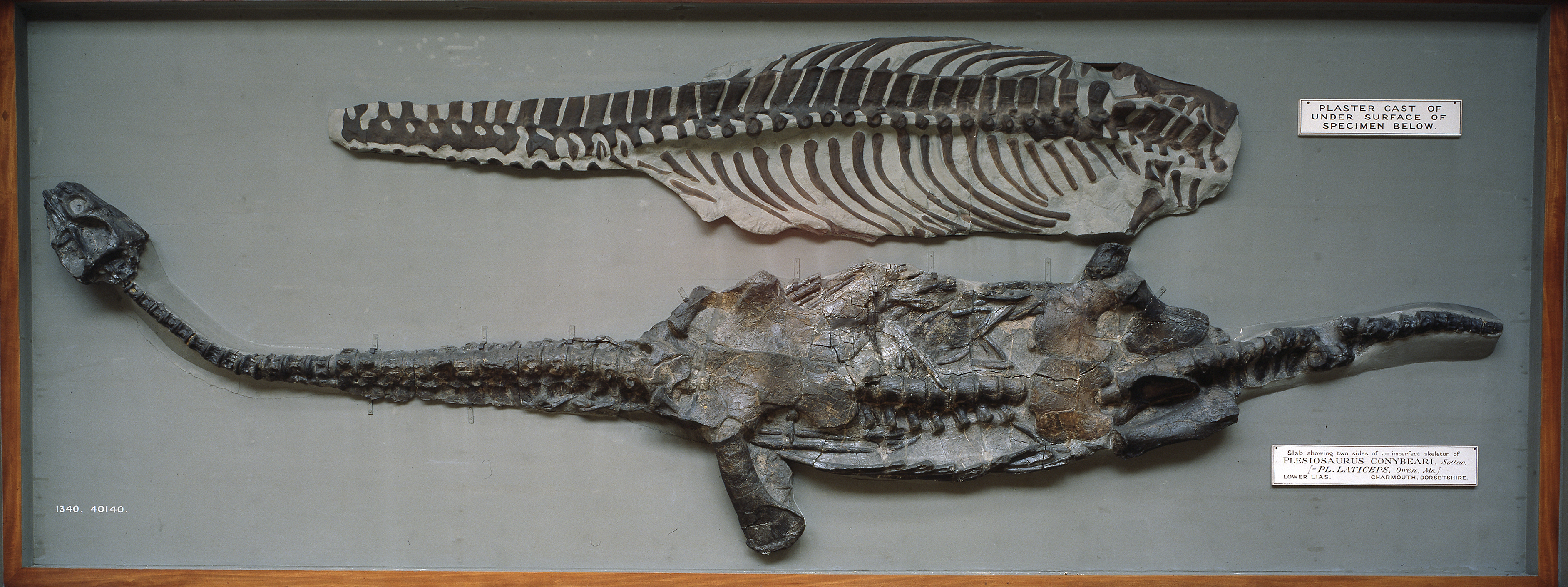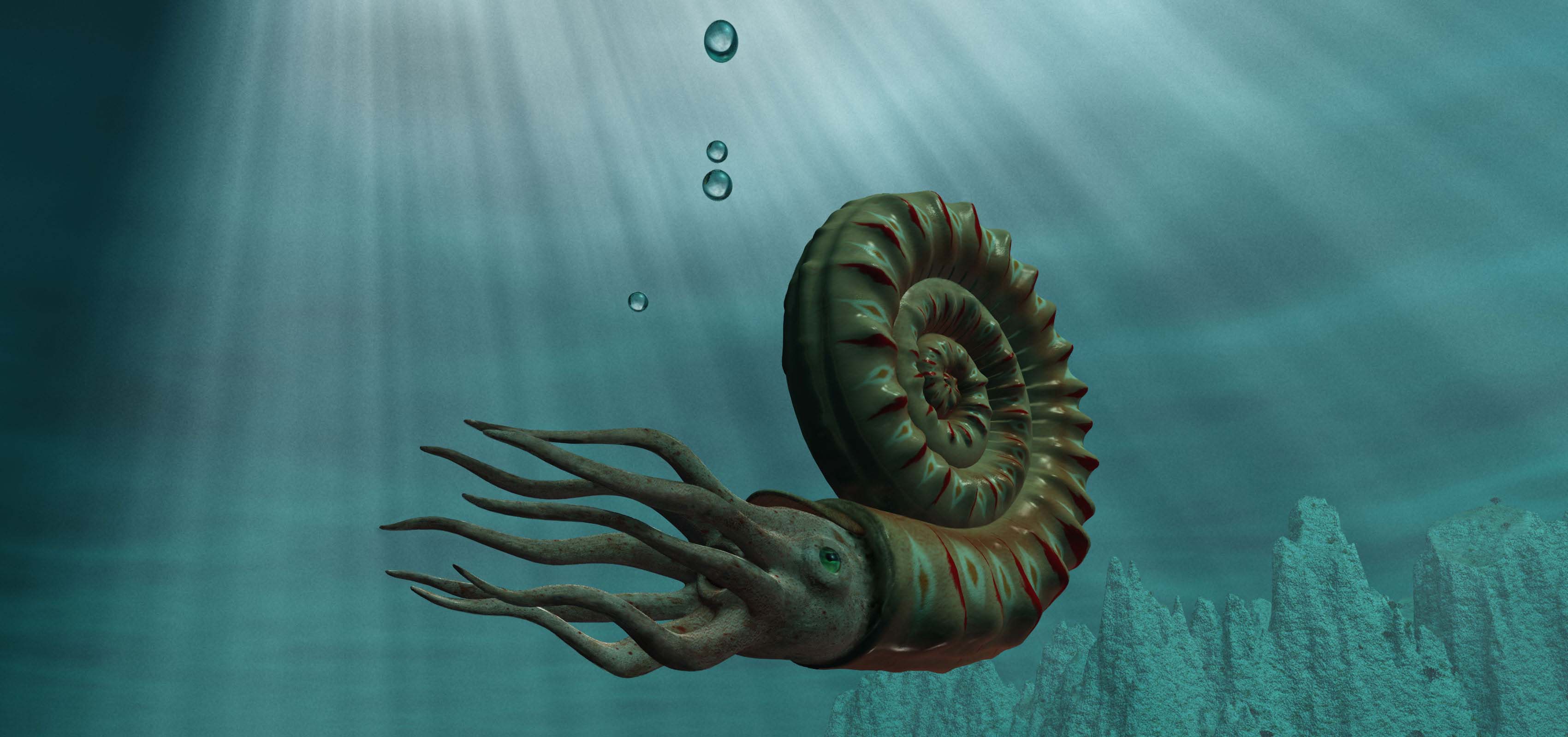This long-necked skeleton is Attenborosaurus, an extinct marine reptile named after legendary broadcaster Sir David Attenborough.

Attenborosaurus on the wall of our Fossil Marine Reptiles Gallery.
Sir David has many animal and plant species named after him, but this namesake is particularly special.
In this instance, the broadcaster has a whole genus – a group of related organisms with similar features – named after him. The species on which the genus is based, called a type species, is Attenborosaurus conybeari.
Watch Sir David Attenborough talking about this namesake specimen in a Washington Post YouTube video.
What was Attenborosaurus?
Attenborosaurus was a plesiosaur, a reptile with a long neck, round body and four limb paddles. It lived about 190 million years ago and swam in tropical seas that covered land which now makes up the south coast of England.
Where and when was Attenborosaurus found and named?
When the remains of this animal were first discovered on the Jurassic Coast in 1880, they were referred to as Plesiosaurus conybeari.
The original specimen was destroyed in 1940, during the Second World War, when a bomb fell on Bristol City Museum and Art Gallery.
Now we house the most complete copy – a plaster cast that you can see high up on the wall in our Fossil Marine Reptiles gallery. Since the original fossil was destroyed, this cast of the skeleton is now the type specimen.
It was renamed after Sir David in 1993 by palaeontologist Robert Bakker, who realised this animal was different enough from other plesiosaurs to deserve its own genus, Attenborosaurus.
After the name was officially declared, Sir David paid a visit to the Natural History Museum to visit the fossil reptile.
Palaeontologist Angela Milner, who passed away in August 2021, hosted Sir David. “When the animal was named after him he was so thrilled – like a dog with two tails,” she said.

On display at the Museum
It’s on display in the Fossil Marine Reptiles gallery.
To find it, stand outside the entrance to the T. rex Grill and look up.
Explore the collections
From giant fossil mammals to mysterious moths, uncover the colourful stories behind some of the most fascinating specimens in our care.


Don't miss a thing
Receive email updates about our news, science, exhibitions, events, products, services and fundraising activities. We may occasionally include third-party content from our corporate partners and other museums. We will not share your personal details with these third parties. You must be over the age of 13. Privacy notice.
Follow us on social media